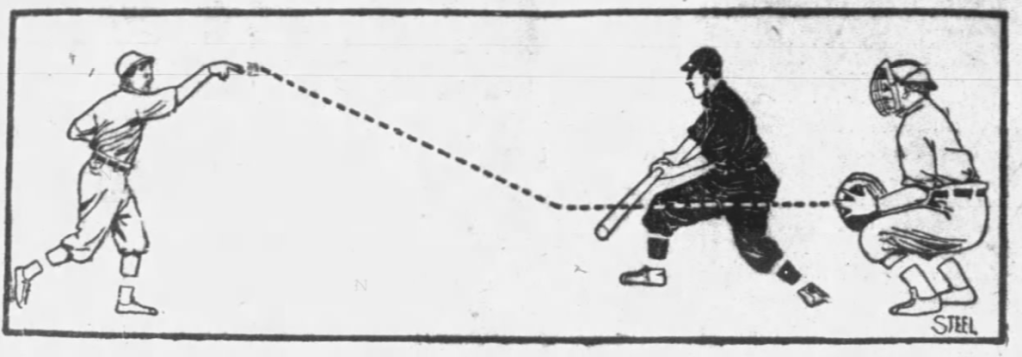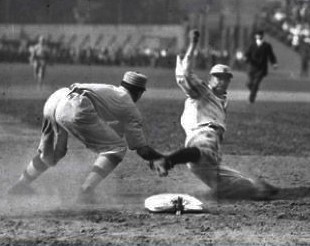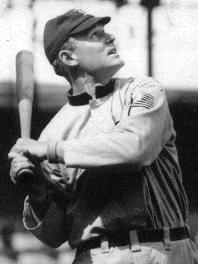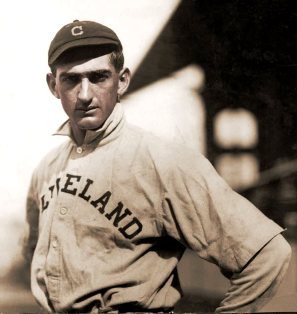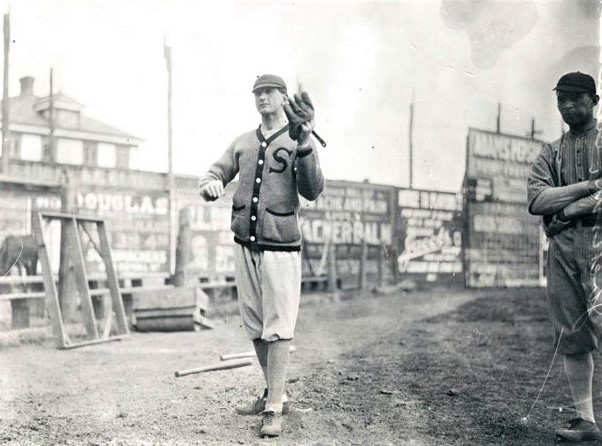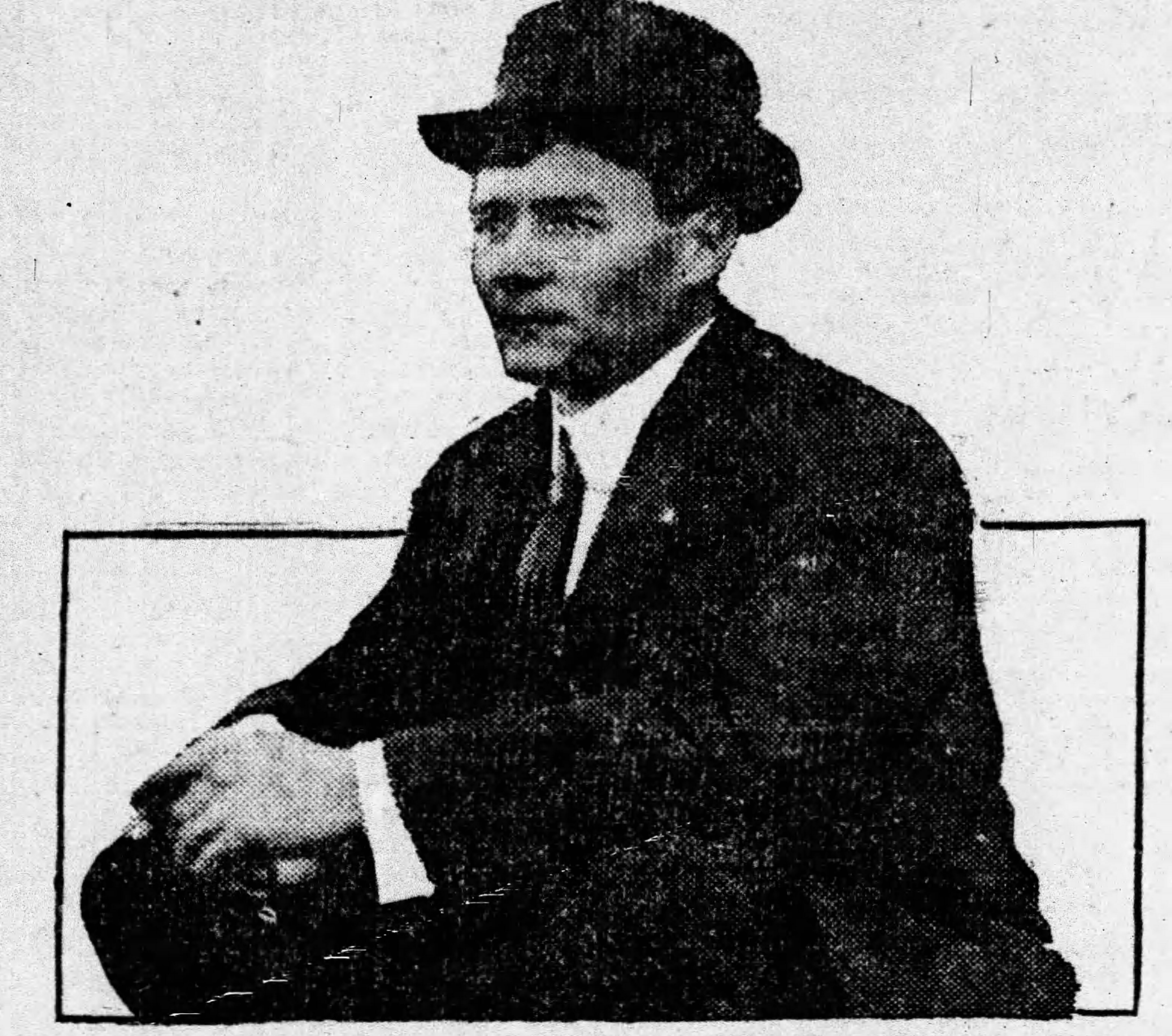William “Wee Willie” Sudhoff was in the midst of his best season. The 28-year-old pitcher, who was 28-52 during his first three major league seasons, was on his way to his first 20-win season for the St. Louis Browns in 1903.
Born in St. Louis, Sudhoff was a local favorite. The St. Louis Republic said about him signing with the Browns (NL) in 1897:
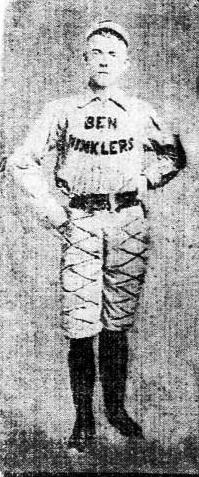
Willie Sudhoff with the Ben Winklers, a local St. Louis amateur club circa 1895
“Although he had many chances to play with the big Eastern teams, Willy Steadfastly refused their offers and remained loyal to the city of his birth.”
On August 28, the Browns left Cleveland aboard a train carrying the ballclub and the Cleveland Naps— the teams were scheduled to play a doubleheader the following day in St. Louis. In Napoleon, Ohio, the engineer misread a signal and the train derailed.
The Associated Press said:
“The Cleveland sleeper (car, the first sleeper on the special train that consisted of a baggage car and two sleepers) turned completely over on one side and the boys on the upper said were thrown over on top of those who occupied berths on the opposite side.”
The rear car, carrying the Browns, ended up in a ditch but did not turn over.
In what The St. Louis Post-Dispatch called, “(A) miraculous escape from almost total annihilation,” no players on either club were seriously injured.
Sudhoff was the most seriously injured player; he had a strained wrist and “had his hand cut,” and missed his scheduled start against Cleveland.
Despite the relatively minor injury, teammates and friends said Sudhoff was never the same after the derailment.
After ending 1903 with a 21-15 record and 2.27 ERA for the 65-74 Browns, Sudhof threatened to leave the Browns two weeks before the 1904 season opener. The Post-Dispatch said he “Bolted from Browns headquarters,” but returned the same day to sign his contract. The paper said:
“A baseball catastrophe was averted.”
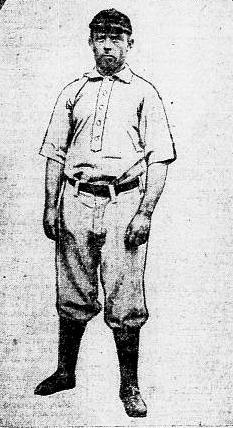
Willie Sudhoff, 1903
By June, Sudhoff, struggling on his way to an 8-15 3.76 ERA season, was accused of underperforming to draw his release. The Post-Dispatch said:
“This is the gossip of the bleachers, where the deep undercurrents of baseball diplomacy are as an open book.
“Sudhoff bears no more resemblance in his pitching this year to the Sudhoff of last year than a Parish League shortstop to Hans Wagner. To all appearances, the little twirler is in excellent condition but he fails of delivery as to the goods nearly every time he goes into the box.”
The paper said, “Sudhoff indignantly denies that there is any truth to the story.”
The following season The St. Louis Globe-Democrat said the Browns had cut Sudhoff’s salary for 1905. Team owner Robert Hedges remained hopeful about his pitcher’s future:
“Willie pitched good baseball at times last year, but he had so many misfortunes during the season that it discouraged him a bit.”
Hedges said two members of Sudhoff’s family had died and that he had also taken care of sick relatives.
And Sudhoff appeared to make Hedges look smart when he shut out the Cleveland Naps in his first start of the season.
He attributed his success to his new “Raising Jump Ball.” He told The Post-Dispatch:
“It is different from the “raise ball” of Charley Nichols and the “jump ball” of Christy Mathewson but combines features of both. It passes over the plate at a man’s shoulder and jumping rises, changing its course slightly as it passes him.”
The paper said Sudhoff believed his pitch “will revolutionize the theory of curve pitching.”
The pitch did not turn Sudhoff’s luck around; after winning his first two decisions he went 8-20 the rest of the season.
Beginning in July, it was rumored that Sudhoff would be sold to the Indianapolis Indians in the American Association, but Sudhoff managed to stay in St. Louis for the whole season. In December he was traded to the Washington Senators for pitcher Beany Jacobson.
The Post-Dispatch said after the trade:
“Sudhoff does not like the stories being circulated about the alleged inefficiency of his arm.”
He told the paper:
“Why should I get out of the game so long as the public and the managers will stand for me? I am still a young fellow…Watch me next year.”
One of the “stories” about Sudhoff’s arm was reported by The Washington Post:
“A St. Louis critic claims that Willie Sudhoff injured his pitching arm by indulging in too much bowling, which developed muscles that he had no use for in his work on the diamond.”
Sudhoff only lasted until July in Washington, in nine appearances he was 0-2 with a 9.15 ERA.
In 1907 and 1908 Sudhoff signed with American Association teams—the Kansas City Blues and Louisville Colonels—but never played in a regular season game for either.
Sudhoff appeared in one more professional game—he gave up four runs in three innings pitching for the Topeka White Sox in the Western Association in July 1908.
He returned to St. Louis where he sold suits and pitched in the city’s semi-pro Trolley league in 1909 and 1910.
Late in 1911, The St. Louis Star reported that Sudhoff was planning a professional comeback:
“He is working hard this winter to get in shape. He believes he can regain his cunning.”
The comeback never materialized and Sudhoff took a job as an oiler at the St. Louis waterworks Chain of Rocks Plant until July of 1913. The Post-Dispatch reported that he had been admitted to St. Louis’ City Hospital, diagnosed as “Violently insane.”
The paper said it took two patrolmen to subdue Sudhoff, who was placed in “a dark padded cell to prevent him from injuring himself.”
According to the report:
“Sudhoff continually calls to everyone who comes within sight, saying he was a professional ballplayer and he will give $5 if the stranger gets him out.”
Mrs. Sudhoff told police her husband “acted queerly” for the previous three months, and “Monday evening he put on his old baseball suit and:
“(C)avorted about the yard, talking continuously about playing with the Browns.”
Sudhoff was transferred to the St. Louis City Sanitarium the following week.
There was speculation about whether it was a beaning in 1905 or the train wreck that contributed to Sudhoff’s insanity.
The paper said:
“Physicians believe (the) old injury to his head is responsible for his condition.”
And while the paper said no one present at the train wreck “(D)o not believe he received a blow serious to cause a permanent injury,” some of Sudhoff’s former teammates, and Browns owner Robert Hedges “(R)ecalled an eccentricity that developed shortly after the wreck. From that time on in a Pullman car, he went to bed fully dressed.”
A 1908 article in The Detroit Free Press about the train crash said:
“Sudhoff was so frightened that he could not utter a word for ten minutes, and from that time until he quit the league, ‘Wee Willie’ always sat up all night on a train. He would do anything to get out of railroad traveling.”
Sudhoff never made it out of the city sanitarium; he died there on the morning of May 25, 1917.
He was survived by his wife and his son, Emmet Wallace, named after Sudhoff’s teammates Emmet Heidrick and Bobby Wallace.
Tags: American Association, Beany Jacobson, Bobby Wallace, Christy Mathewson, Cleveland Naps, Honus Wagner, Kansas City Blues, Louisville Colonels, Robert Hedges, St. Louis Browns, Topeka White Sox, Washington Senators, Western Association, Willie Sudhoff

